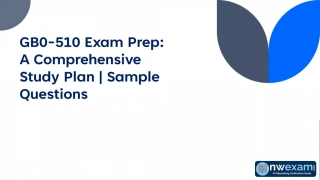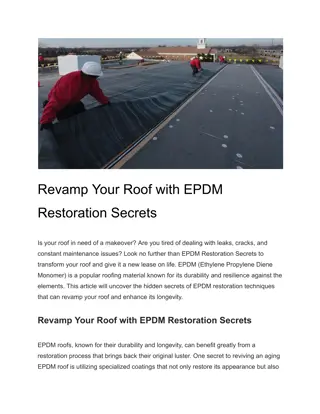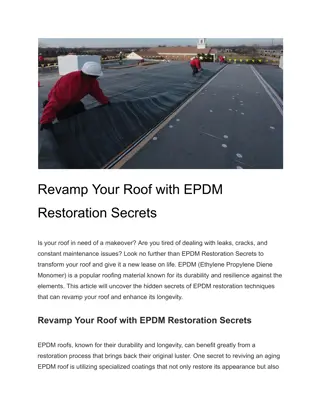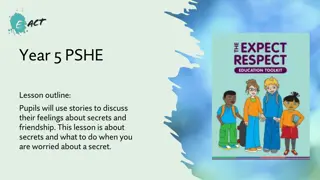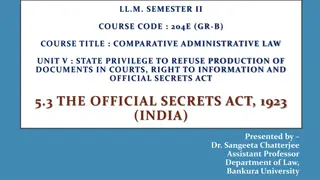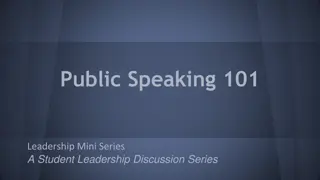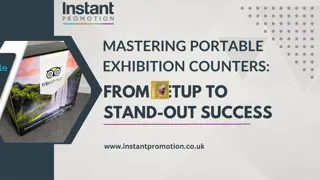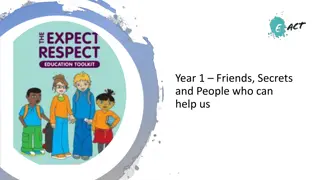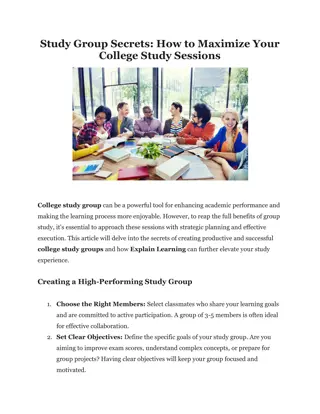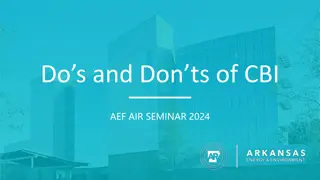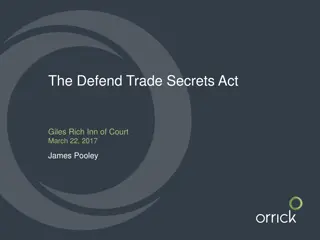Mastering Presentation Skills: Secrets and Tips for Success
Craft a compelling presentation with these insider tips on content structure, audience engagement, timing, and practice. Learn the art of storytelling, effective communication, and strategic delivery to captivate your audience and convey your message with impact. From setting your goals to outlining your presentation and practicing your delivery, this comprehensive guide covers all aspects of delivering a successful talk.
Download Presentation

Please find below an Image/Link to download the presentation.
The content on the website is provided AS IS for your information and personal use only. It may not be sold, licensed, or shared on other websites without obtaining consent from the author.If you encounter any issues during the download, it is possible that the publisher has removed the file from their server.
You are allowed to download the files provided on this website for personal or commercial use, subject to the condition that they are used lawfully. All files are the property of their respective owners.
The content on the website is provided AS IS for your information and personal use only. It may not be sold, licensed, or shared on other websites without obtaining consent from the author.
E N D
Presentation Transcript
https://www.viterbo.edu/undergraduate- research/resources-students http://www.youtube.com/watch?v=uhiCFdWe QfA http://www.youtube.com/watch?v=lpvgfmEU 2Ck&noredirect=1
Who will be there Why are they attending? How much do they know about your topic? What would they like to learn? Is it appropriate to interject personal revelations in the talk?
Goals!! Disseminating info Graded presentation for a course Professional school interview Job interview
Timing is everything! Problem/Background 2 - 3 Design/Methods 2 4 5 min Major findings 3-5 Impact Conclusions 1-2 Impact
Presentation outline Title Slide Introduction and previous studies Your question and experimental design Your data Data analysis Your conclusions and unanswered questions Future work Acknowledgements Most sections will require more than one slide
Prepare your material carefully and logically Tell a story. The story should have four parts: Introduction-clearly state question/hypothesis/relevance Methods Results Discussion/conclusion (Future research) Acknowledgements References
Practice your talk Suggestions to get into a good ballpark range: Estimate a rate of about 100 words per minute (slow! - conversation occurs at about 300 words/minute) Each statement you make will require an average of 12 words Each concept will need to be supported by 3 - 4 statements
Practice Again Laser pointer-work on this so you don t make your audience dizzy! Use of room for practice Practice is the single most important factor contributing to a good presentation
Polish your graphics Use large letters (no fonts smaller than 16 pt) Pay special attention to figure axes , titles for graphs Keep the graphics simple Don't show graphs you won't need. If there are four graphs on a slide and you only talk about one - cut the others out. Don't use different fonts or type styles - it makes your slide look like a ransom note. Use color wisely Color makes the graphic stand out. Avoid red or yellow or green in the text - red is difficult to see from a distance. Also, check your color using the projector. Some color schemes look fine on paper, but project poorly. Graphs should replace tables where possible in a visual presentation
Don't put in too much material Rule of 7s 7 words per line 7 bullets per slide Avoid jargon and abbreviations, unless they are clear to all the audience Never use a long word when a short one will do DON T read your slides, use as outline
Have only a few conclusion points Leave the listener with the key points At most people will remember 2 to 3 key points Your chance to provide take home message
Use Time Wisely Don't run over! Ever! Be sincere; be brief; be seated." - Franklin D. Roosevelt Shorten your talk by removing details, concepts, and information, not by eliminating words
Talk to the audience not to the screen Speak loudly and slowly pick out a few people in the audience and pointedly talk to them as if you are explaining something to them
Avoid making distracting sounds and habits try to avoid "Ummm" or "Ahhh" between sentences If you put your hands in your pockets, take the keys and change out so you won't jingle them during your talk
Constructive Criticism Ask a few people to critique Give entire talk without interruptions Peers take notes on rough spots Afterward, go through slide-by-slide and discuss Ask you advisor for help Allow for ~1 hour to critique a 10 minute presentation
Oh no, the big day is here Proper attire Arrive on time-load presentation Restroom? Confidence!!
Alternatives to PP https://www.youtube.com/watch?v=nHqZxAp fgf0
Other Links for Guidelines Guidelines for Oral Presentations, Ohio Wesleyan University @ http://go.owu.edu/~dapeople/ggpresnt.html Mark D. Hill, Oral Presentation Advice, UW- Madison @ http://pages.cs.wisc.edu/~markhill/conference- talk.html Tips for Oral Presentations, Wellesley College @ http://www.wellesley.edu/ruhlman/presenting/ti psop



